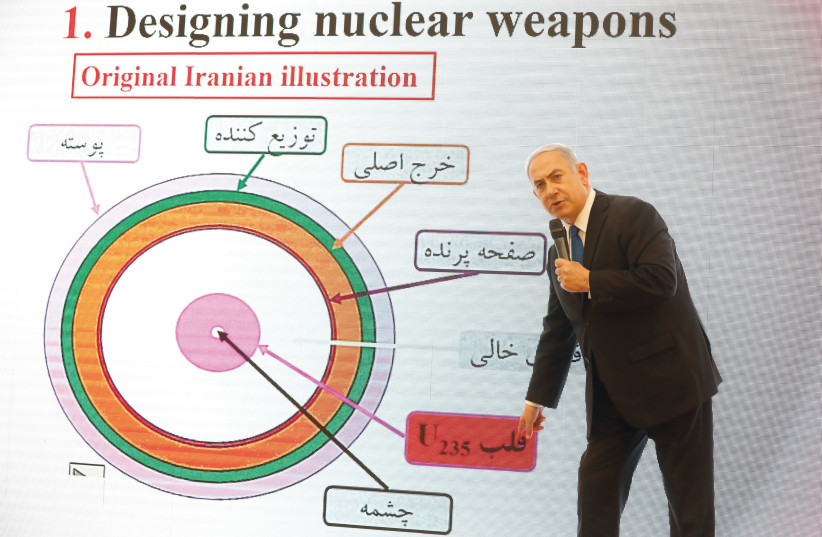The fate of the Iran nuclear standoff may depend on the IAEA nuclear inspectors who are often considered a less important technical and side issue.
With that in mind, the Islamic Republic until recent weeks believed that it could intimidate the agency – which mainly takes its lead from the US and the EU – into closing all questions about its past nuclear military activities, the same way it did for the JCPOA 2015 nuclear deal.
Though the situation is in flux, it appears that the West and the IAEA are holding strong this time to keep probes of illicit nuclear material, equipment and documents at three nuclear sites open, despite Tehran’s rage over the issue.
This means that even as many were declaring the ink of a deal all but dry on the paper where it would be imminently signed, there will likely be multiple minefields ahead, even post-signing, which could derail the process and thrust the world back into a crisis.
All of this stems from Mossad’s remarkable seizure of Iran’s secret nuclear archive from under Tehran’s nose in January 2018.

There are a variety of deadlines that have been discussed from 60 days after the deal would be signed to 165 days after the deal would be signed and maybe an indefinite amount of time beyond those 165 days if the parties agree to a delay.
Essentially, what the discussed deal comes down to is a three-step process.
Iran nuclear deal: The three-step process
In step one, they commit to partial sanctions relief for partial nuclear limitations within 60 days.
In step two, both sides actually implement their partial relief.
But neither side will have really made irreversible steps at that stage.
That means the real decisive point is stage three after 165 days, the point by which the IAEA issue is supposed to be resolved.
But what if Iran does not give satisfactory answers to the IAEA – which has been going on now for about four years – regarding the illicit nuclear materials?
What if either Tehran or Washington asks to postpone the 165-day implementation of full nuclear limits and full sanctions relief to continue trying to resolve the IAEA issue.
At a certain point, either unresolvable differences over the issue or too many delays could unravel the whole process.
Is Iran ever going to be ready to partially admit it did some military nuclear activities?
If not, it is hard to see the IAEA closing its probes.
Or will the ayatollahs be satisfied as long as the IAEA keeps the probes open forever, as long as it is never condemned and the issue is not referred to the UN Security Council?
Either way, it is astonishing that the fate of the world in dealing with Iran 2022-2023 is still very much caught up in the results of a Mossad operation nearly five years ago, which just made it too hard for the West to stick its head in the sand.
